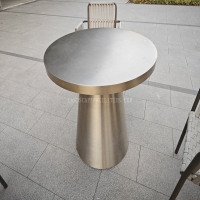Welcome to the website for landscape facilities products and knowledge.
How does the table’s design facilitate the use of physical or digital brainstorming tools?
Modern table design has evolved significantly to support both physical and digital brainstorming methodologies, creating environments where creativity flows freely across different mediums. The integration of built-in power outlets and USB ports addresses a fundamental need in digital brainstorming sessions, allowing teams to keep devices charged during extended ideation processes. This thoughtful incorporation of technology infrastructure transforms the table from a passive surface into an active participant in the creative process.
Many contemporary tables feature integrated touchscreens or compatibility with portable digital whiteboards, bridging the gap between traditional and technological brainstorming approaches. These surfaces enable teams to quickly digitize ideas that originate from physical tools like markers and sticky notes, creating a seamless workflow between analog and digital realms. The non-porous, smooth surfaces of modern tables are specifically engineered for easy writing and cleaning, accommodating both dry-erase markers and traditional pen-and-paper methods without compromising either approach.
The physical architecture of brainstorming tables plays a crucial role in facilitating collaboration. Oval and boat-shaped designs provide better sightlines among participants compared to traditional rectangular tables, ensuring all team members can engage equally with both physical sketches and digital displays. Adjustable height mechanisms allow teams to transition between seated detailed work and standing overview sessions, accommodating different brainstorming styles and physical needs throughout the creative process.
Material selection in table construction significantly impacts the brainstorming experience. Magnetic surfaces enable the temporary display of physical artifacts alongside digital content, while heat-resistant materials allow teams to place laptops and tablets safely during intensive sessions. The incorporation of cable management systems maintains clear workspaces, preventing technological clutter from interfering with the free flow of ideas across both physical and digital platforms.
The most effective brainstorming tables feature modular designs that can be reconfigured based on the specific needs of each session. Some include recessed areas specifically designed to hold tablets and smartphones at an optimal viewing angle, while others incorporate dedicated storage for physical brainstorming tools within arm's reach. This thoughtful organization ensures that both traditional and technological tools remain accessible without dominating the workspace, maintaining focus on the creative process rather than tool management.
Hybrid brainstorming tables now often include integrated video conferencing capabilities, with strategically placed cameras and microphones that capture both the physical workspace and participants equally well. This design consideration has become increasingly important as teams collaborate across physical and virtual spaces, ensuring remote participants can engage fully with both the digital documents and physical prototypes being discussed. The table itself becomes the conduit connecting disparate team members through shared interaction with both types of brainstorming tools.
The psychological impact of table design on brainstorming effectiveness should not be underestimated. Warm wood finishes may encourage more organic, free-flowing ideation with physical tools, while sleek technological integrations might promote more structured, digital approaches. The most successful tables balance these aesthetic considerations, creating an environment where teams feel comfortable transitioning between different brainstorming methodologies as the creative process demands.
As workplaces continue to evolve toward more flexible, hybrid models, table design will likely incorporate even more sophisticated integrations between physical and digital brainstorming tools. We're already seeing early prototypes with embedded object recognition technology that can automatically digitize physical sketches and augmented reality interfaces that overlay digital information onto physical prototypes. These advancements promise to further erase the boundaries between different brainstorming mediums, ultimately enhancing creative output through thoughtful furniture design that understands and supports the entire spectrum of ideation tools available to modern teams.
Related search:

Recommendation
Outdoor Metal Table - Classic Outdoor Furniture, Stainless Steel Table, Durable and Reliable